Estimated reading time: 13 minutes
You may not know this, but most apple trees bought from nurseries do not come from seed. They are actually grafted trees. A small branch from an apple variety is typically grafted onto a small trunk and root system from a crab apple tree, and as the graft matures it grows into an apple tree.
The reason for this is profit. It’s cheaper and more reliable to graft apple trees to crab apple roots than to grow them from seed. The grafted trees are healthy and will produce apples, but an apple tree grown from seed has some advantages.
For one, apple trees grown from seed are often healthier and actually grow faster than their grafted cousins. Apple trees grown from seed also tend to live longer and grow taller than trees grown from a graft.
Another benefit is that it’s cheaper and easier for home gardeners to start their apple trees from seed, rather than the relative risk of graft failures and finding both the graft and root sources.
However, the primary reason most apple trees are grafted is to ensure the resulting fruit is true to its variety. Taking a cutting from an established tree that has been accurately identified will ensure the resulting apples are the same.
With some seeds, the fruit you get is a roll of the dice if your seed source is a hybrid apple that has been hybridized by cross-pollination. The telegram is that harvesting seeds from heirloom apple varieties can keep the strains pure and ensure that you will get the true tree and the fruit you expect.
Want to save this post for later? Click Here to Pin It On Pinterest!

There Are Some Challenges
Growing apple trees from seed comes with some surprising challenges. One has to do with variability of seeds harvested directly from an apple. Many apples sold in stores are hybrids and the seed can result in a different variety of apple than the one purchased in the store.
There’s also a possibility that a hybrid seed will not germinate or even bear fruit. Considering that it takes up to 8 years for an apple tree to bear fruit in the first place, it would be a real disappointment to plant and care for a tree all that time without seeing any apples after a decade.
Related: 10 Best Heirloom Seed Companies
Another challenge is the need for cold stratification. Many plants need to go through a period of cold temperatures before they will germinate. This is a self-defense mechanism to prevent a seed from germinating in the fall and dying off as a sapling in the winter.
Cold stratification requires at least 6 weeks of time in a refrigerator to send a signal to the seed that winter has come and gone and it’s okay to germinate.
The best way to cold stratify apple seeds is place them on a moist paper towel that’s folded over the seeds and stored in a plastic sandwich bag. The bag should be left partially open, and the paper towel checked once a week to make sure it’s still moist.
Some seeds may germinate while in the fridge and that’s great. They’re telling you they will actually germinate. And that gets to another challenge with apple seeds. Many of them never germinate. The average germination rate seems to fall in a range between 30 to 60%. If the seeds have not been cold stratified, none will germinate.
As a result, even after cold stratification you should over-plant the number of seeds you want to germinate. That’s not too hard to do considering most apples from a store come with 8 to 12 free seeds.
Related: Can You Plant Apple Seeds From Store-Bought Apples?
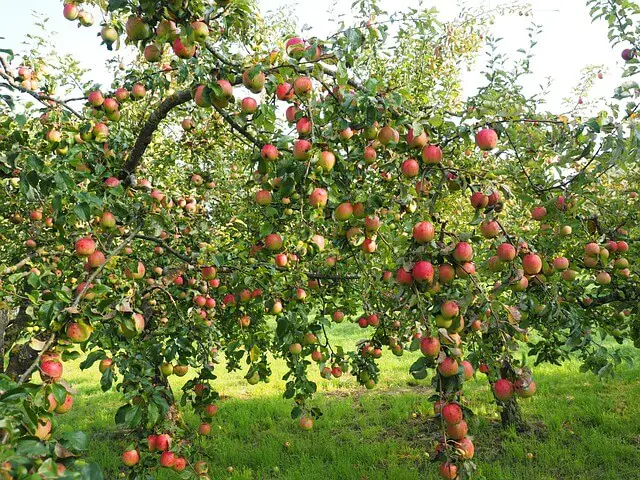
The Best Apple Seeds to Grow
You can buy apple seeds online in a packet if you want, but if you’re buying apples at a store for seed harvesting start with the organic, heirloom, non-GMO varieties if you can. The heirloom seeds have not been hybridized so what you see is what you get. Organic varieties may also have healthier seeds so you can get a better germination rate.
If you can’t find heirloom varieties in the grocery store just select the apple you prefer to eat or use for baking or cider. In a bit we’ll list some hybrids to avoid. For now, here’s a short list of varieties you can find in a grocery store and their best uses:
Lady – Lady apples are an old, heirloom variety going back to the gardens of Kind Louis XII of France. They are mildly sweet and tart and are used for both eating and baking.
Baldwin – Baldwin apples are a popular American variety of apple the is very sweet and a hint of spice. They are also intended for eating and make great apple cider.
Esopus Spitzenburg – Here’s on you may not have heard of but it’s been around for centuries and was reportedly a favorite of Thomas Jefferson. The Spitzenburg is another heirloom variety with a sharp flavor and are often used for baking.
McIntosh – McIntosh is an heirloom variety often used to hybridize Empire apples, Macoun and Cortland varieties are often the hybrids from McIntosh. It’s a very juicy apple and sweet and its preferred for cider.
Cox’s Orange Pippin – The Orange Pippin is another heirloom variety originated in Britain and is fruity and complex. It is often used for baked desserts.
Granny Smith – Known by many as the baking apple, the Granny Smith apple is an heirloom that originated in Australia and it is very tart and high acid. It is also an heirloom variety.
Golden Delicious – The traditional lunchbox apple that was first found on a farm in West Virginia. It is most likely a hybrid but it’s creamy taste and yellow color make it unique.
Bad Apples
No apple is bad to eat, but many well-known varieties are not the best for apple trees from seed. These are the varieties that have been genetically modified in a number of ways.
The problem is that these seeds will often produce one variety from the genetic mix or will never bear fruit. That’s a hard lesson to learn after years of waiting for your first apple harvest.
Here are some popular grocery store apples you might want to avoid for starting an apple tree from seed:
- Braeburn
- Cosmic Crisp
- Envy
- Honey Crisp
- Jonagold
There are many more. If in doubt about an apple’s heritage, Google it to see if it’s heirloom or hybrid.
Of Course There’s More
The varieties we highlighted are only a few of the many and diverse types of apples. For the most part we only featured the heirlooms, but if you have the space to plant more than a couple of trees you can experiment with different varieties and hybrids.
Harvesting the Seeds
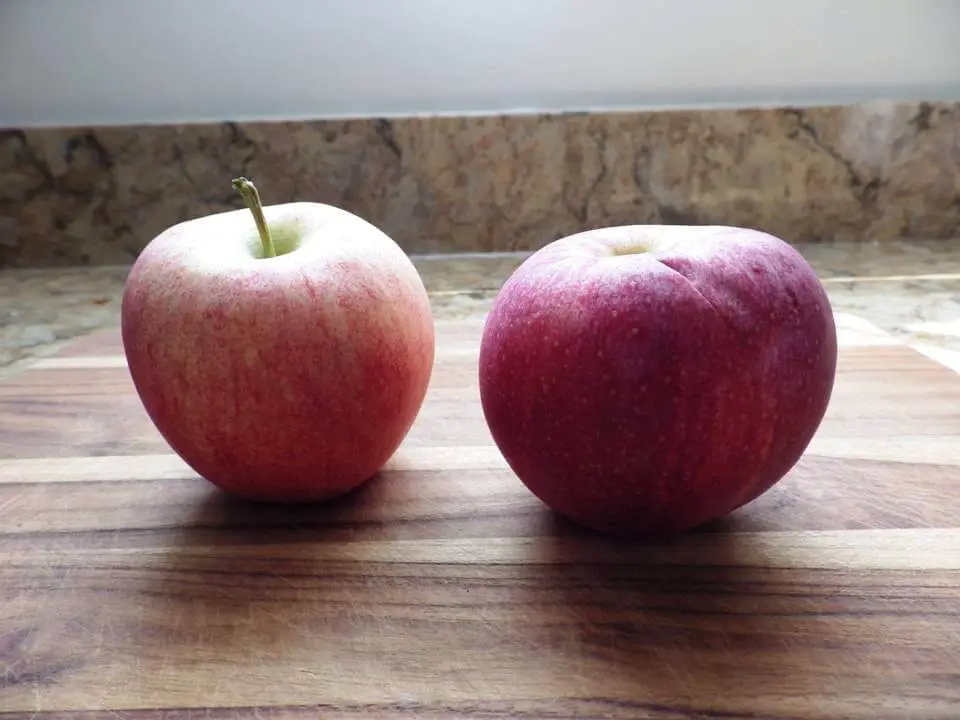
There’s no rocket science here.
1. Cut the apple in half down from the stem at the top to the bottom and carefully pick out the seeds with a toothpick. You may need to quarter the apple to get any buried seeds.
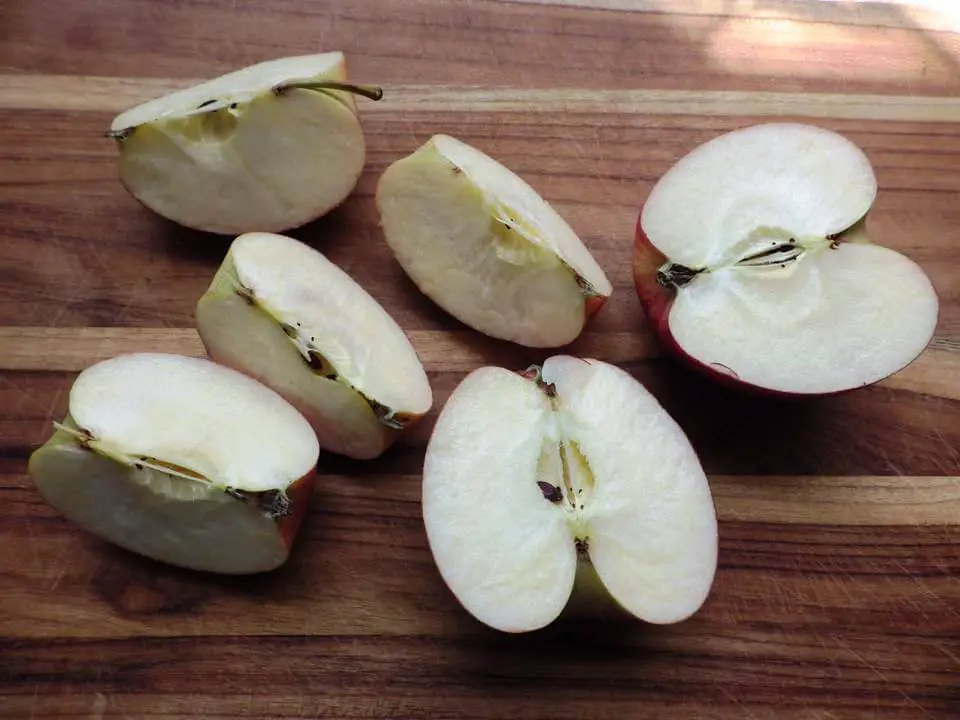
2. Check the seeds over and discard any that don’t look right or have been accidentally nicked by your knife.
3. Once you’ve collected your seeds, rinse them in a strainer under cold, running water. Some seeds have a coating that prevents them from germinating inside the fruit, and if your apple variety has this coating, a good rinse will wash it away.

This coating is more common with tomatoes and squash but with an apple seed germination rate running at around 50% – why not?
Related: Saving Apple Seeds: When And How To Harvest
Cold Stratifying the Seeds
1. Moisten a paper towel and spread around 10 seeds across one side of the towel.
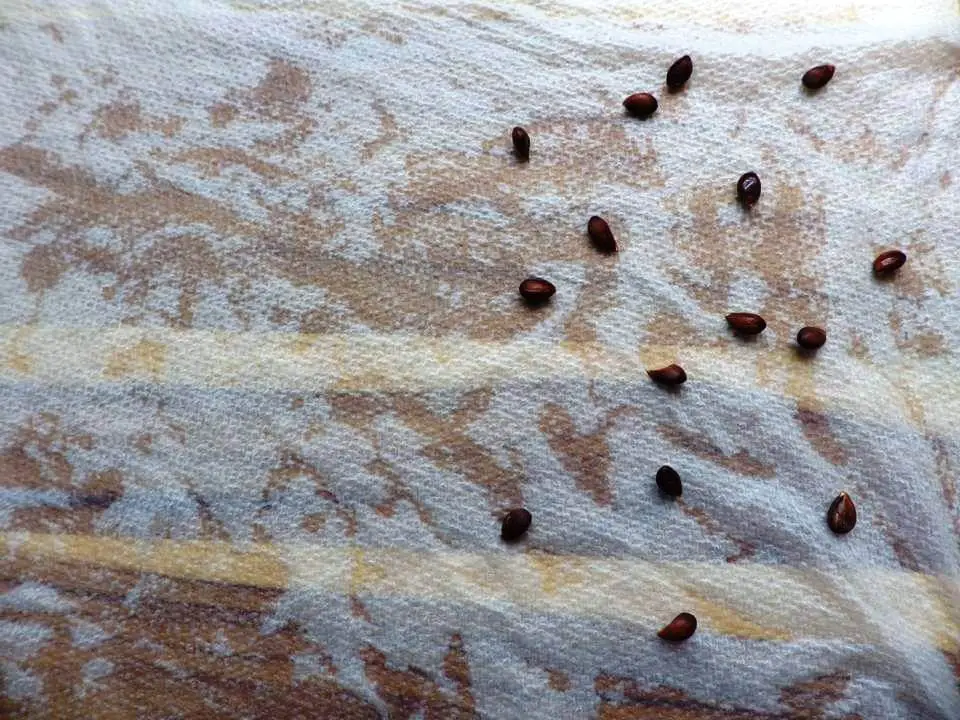
2. Fold over the top to cover the seeds.
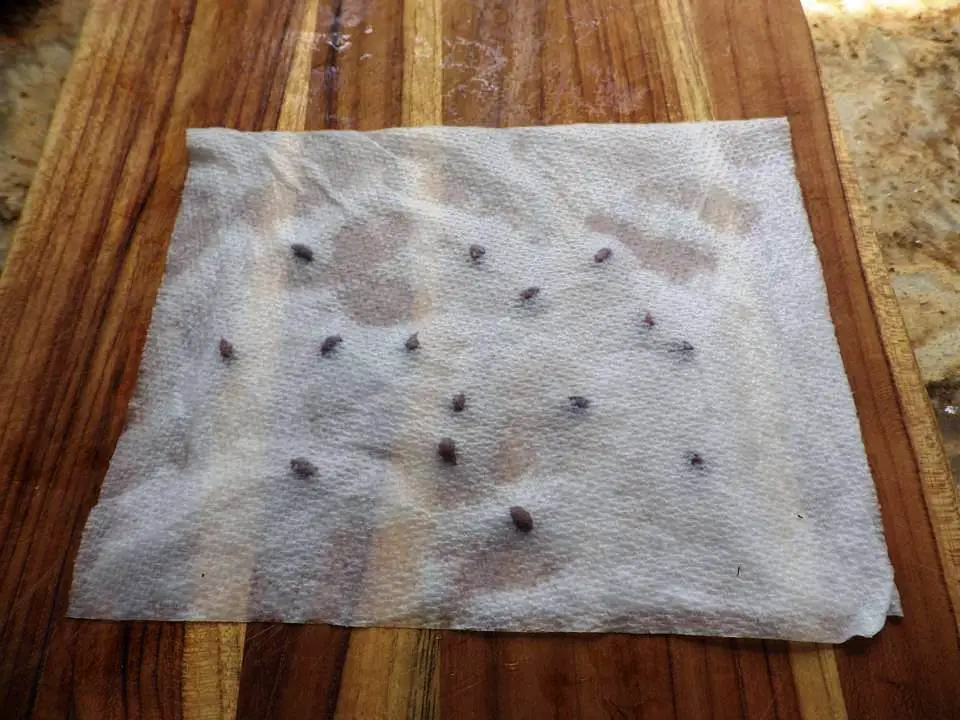
3. Place in a plastic sandwich bag.
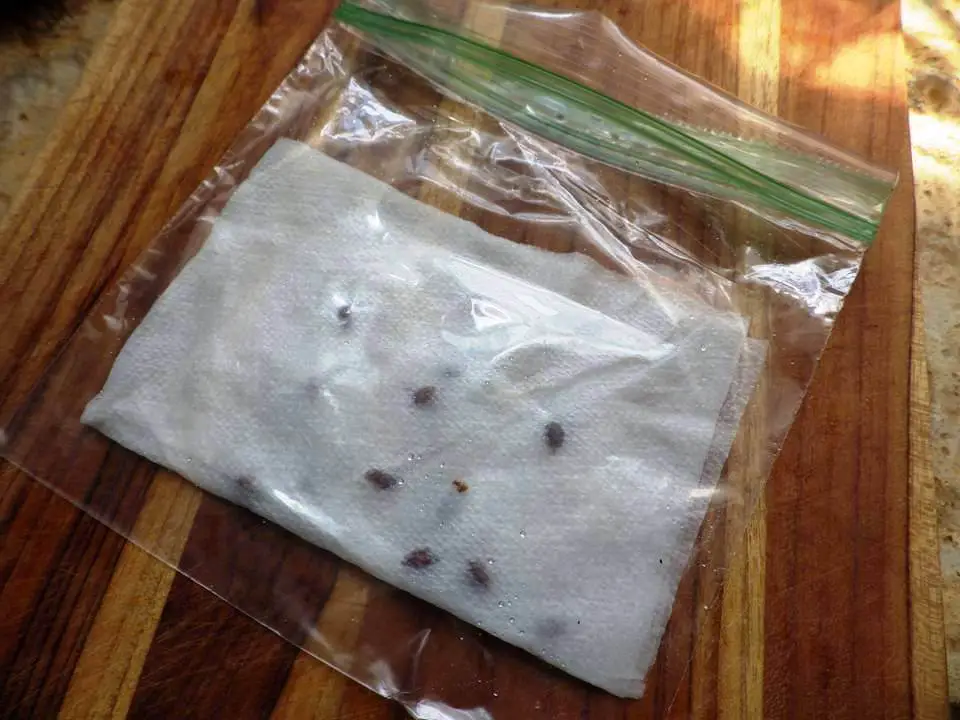
4. Leave the top of the bag partially open and place the bag flat somewhere in the back of your fridge.
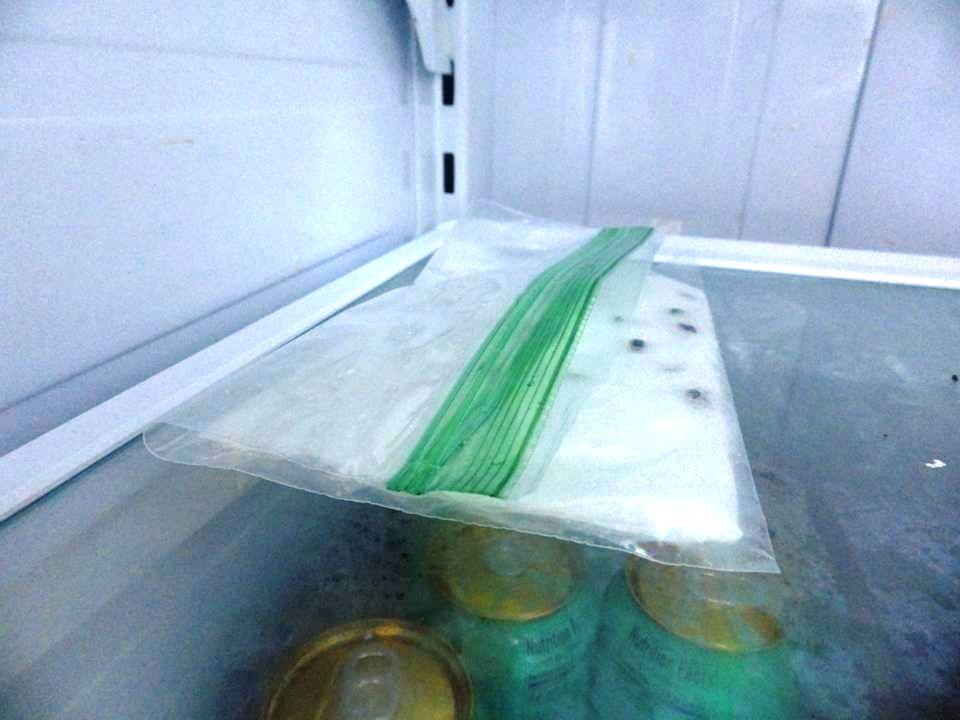
The best temperature is between 36 and 38 degrees, and do not let them freeze.
You can stack additional bags one on top of the other, but it makes sense to alter the stacking each week when you check the moisture levels on paper towels.
5. Wait 6 weeks, and now you’re ready to sprout the seeds.
Sprouting Apple Seeds
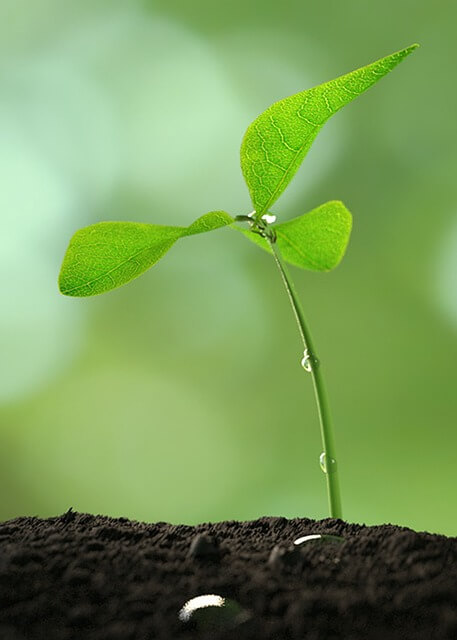
Apple seeds are surprisingly easy to sprout in spite of the germination rates we mentioned. Be grateful if a few of your seeds have sprouted on the paper towel.
The best pot or container for sprouting apple seeds is either a large flower pot for sprouting multiple seeds, or smaller pots for sprouting individual seeds. Save the smaller pots for those seeds that germinated in the fridge, and use the larger pot for seeds that have not germinated. You want to play odds in the hopes that at least 50% of your seeds will sprout.
The best soil is a good potting soil with a mix of peat moss, compost and Perlite. The best temperature for sprouting is 75 to 80 degrees Fahrenheit. On average, it takes about 1 to 2 weeks for the seeds to sprout.
Keep the soil moist as much as possible and allow the sprouts to grow in their original pots until about 4 to 6-inches tall.
Another option if you just don’t have the time is to just gamble and spread a good amount of apple seeds in an outdoor garden bed. Water frequently and identify the varieties with stakes.
Not all will emerge but those that do will slowly mature and harden-off while growing. Once they get to about 6-inches tall you’re ready to transplant them into a pot for further growth, or in the ground protected by a small cage.
Related: How to Create the Perfect Seed Starting Soil
Planting the Sprouts
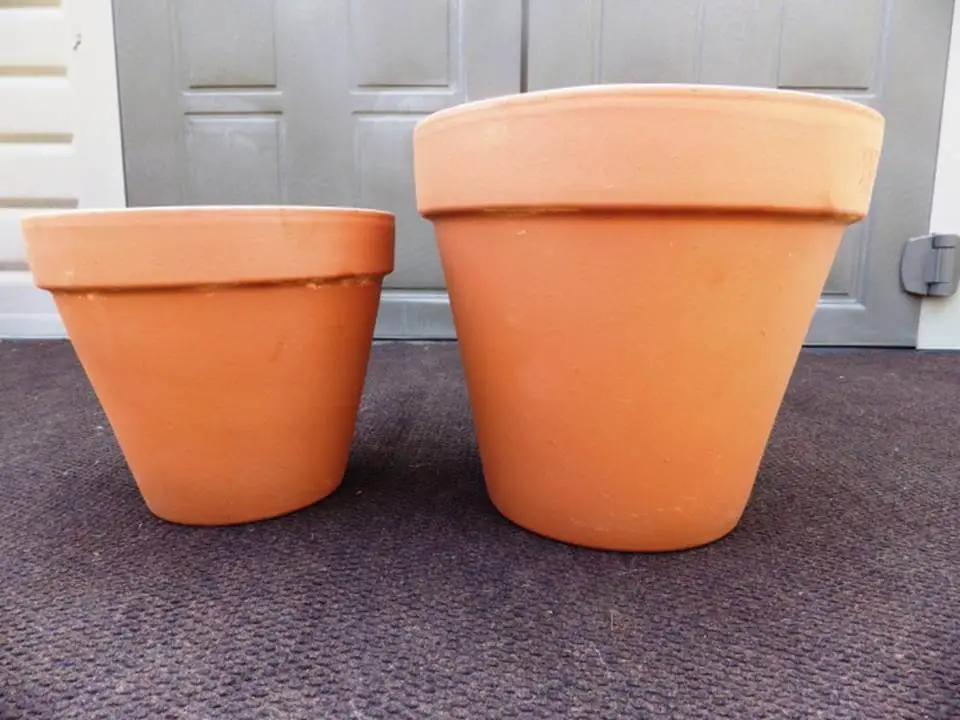
The best way to sprout apple seeds is in a good potting mix in pots. You can use a larger pot anywhere from 10 to 14 inches in diameter for multiple seeds, or smaller pots for individual seeds. It's best to use seeds that have already sprouted on the paper towels in the smaller pots because you’ll always have some limited germination rates with unsprouted seeds.
1. Bury the seeds about an inch deep in the soil and moisten well with water and keep in a warm area where the temperature is at least 75 degrees F.
2. Continue to water daily and in about a week or two, check for sprouts. Let the sprouts continue to grow, although multiple sprouts in large pots can be carefully transplanted to smaller pots after 2 or 3 weeks.
3. Before planting outside, harden off the small saplings by placing them outdoors during the day or all night and day if the weather is warm. Harden them off for about 2 to 3 weeks and keep them well watered.
Your apple trees should be planted about 20 feet apart unless you have a dwarf variety. Those can be planted 10 feet apart or even planted in containers.
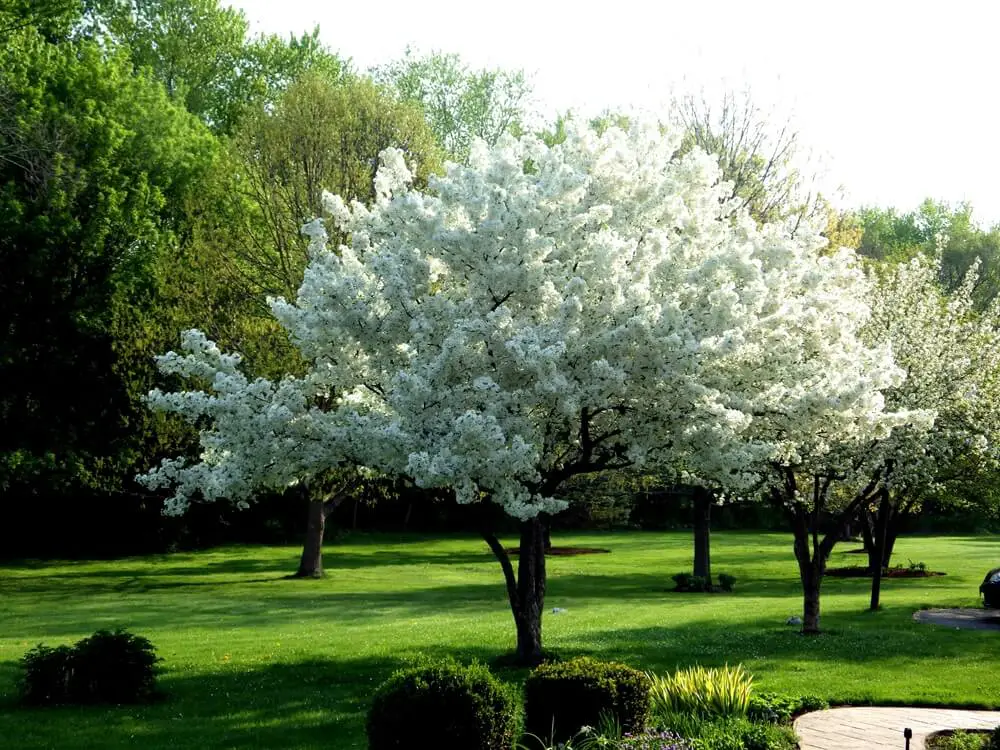
Apple trees prefer at least 6 hours of sunlight every day. It’s also wise to try and plant at least two trees of the same variety if you can. This will help with pollination in the spring although many apples are self-pollinating.
Related: The Ultimate Guide to Starting Seeds
Sapling Care and Feeding
Regular watering is very important for any sapling especially if they are being grown in a container. You can also feed your saplings with a prepared tree feeding mix or small fertilizer spikes, or go the organic route with a top dressing of compost.
Pruning
Pruning won’t be a real issue for the first couple of years, but if you have erratic branches sprouting at the bottom you might want to prune it.
As time goes on, you many need to prune the tree to manage its size. Apple trees easily grow to 20 feet so prune to fit your space. That’s especially important with container trees on a patio.
Related: Pruning Apple Trees
Additional Resources
There’s a lot of additional information about apple trees and not only how to start them from seed, but raise them to get the best harvest. Here are some links to articles, book and videos that cover the subject pretty well:
- 12 Fastest Growing Fruit Trees for Your Backyard
- 13 Fruit Trees You Can Grow in Five-Gallon Buckets
- 13 Trees Every Homesteader Should Plant
- Fruit Trees From Seed Vs Grafted Trees
- How to Harvest Seeds from Grocery Store Produce
- How To Start Seeds In An Egg Carton
- Pruning Apple Trees
Keep Sprouting
Once you get the hang of growing apple trees from seed you can expand the size of your orchard if you have the land, or offer your sprouted saplings as gifts to family, friends and neighbors. Apples are a versatile fruit and highly nutritious so it may be worth the time to grow an apple tree or two in your yard or around your homestead.
In time you’ll have more than enough apples for eating, baking, cider and even apple cider vinegar all because you took some time to harvest a few seeds.
Like this post? Don't Forget to Pin It On Pinterest!
You May Also Like:

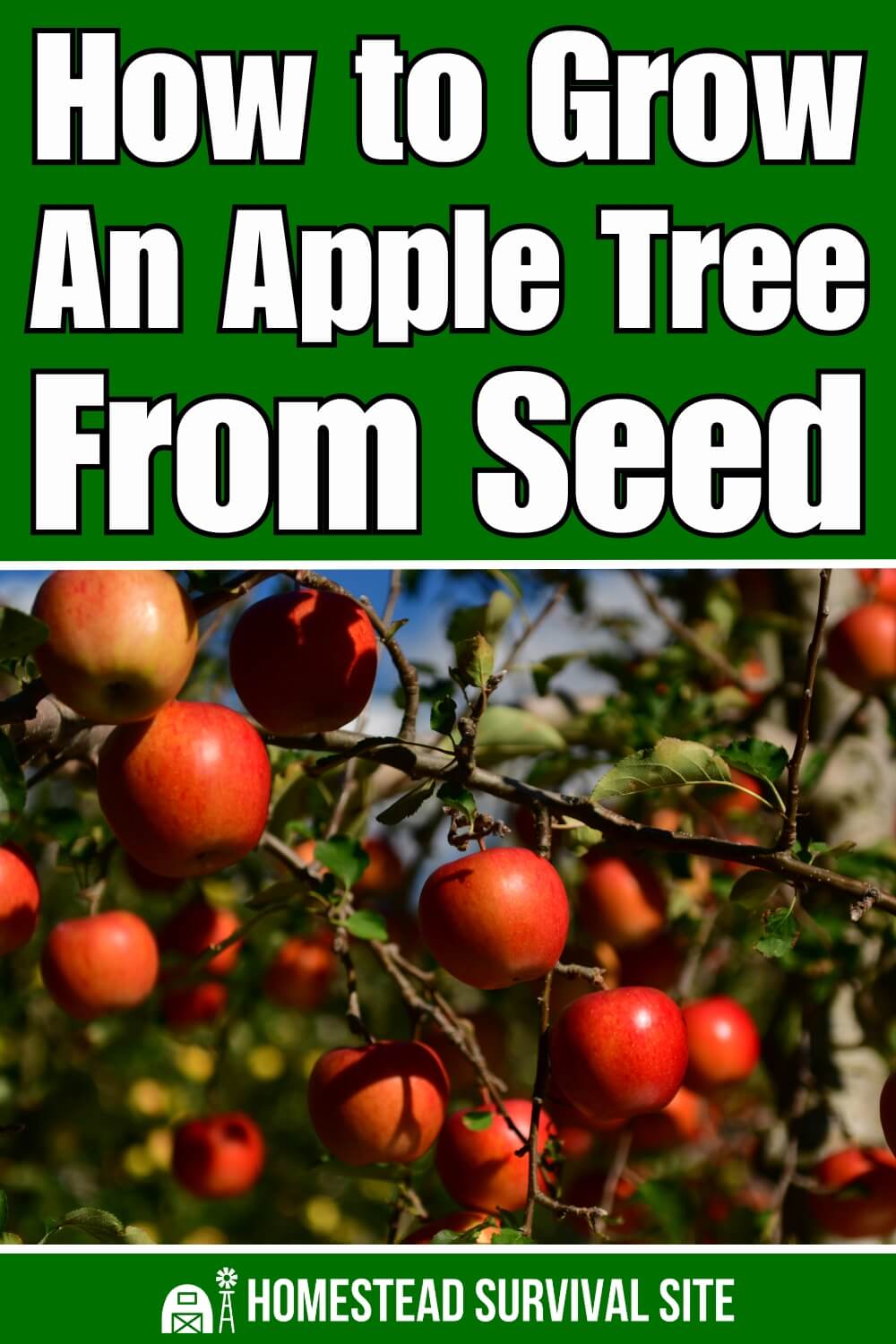


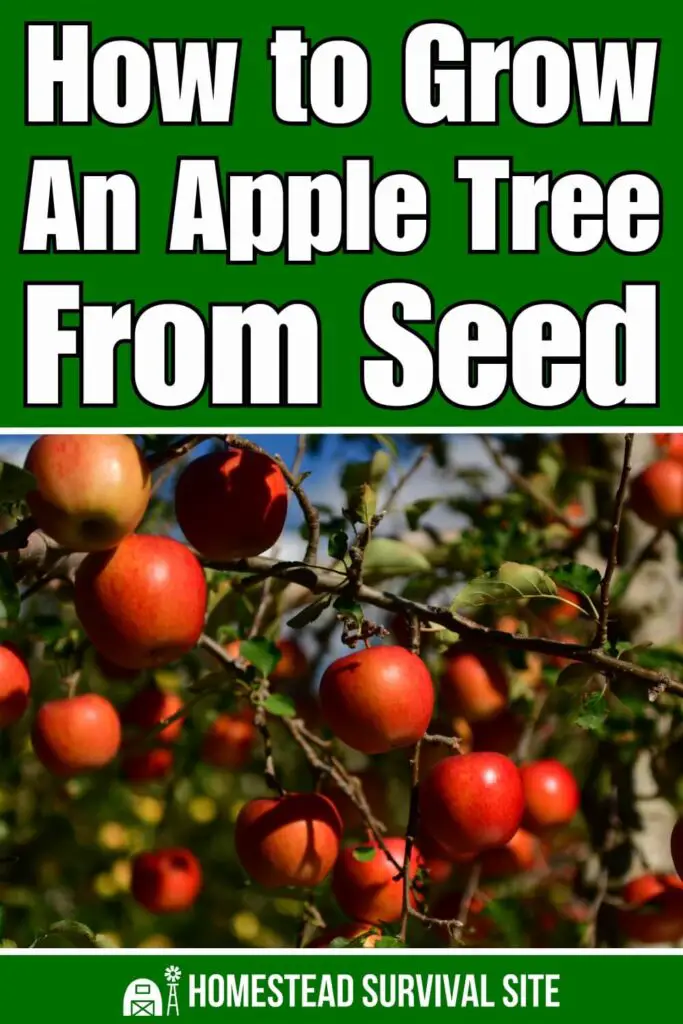



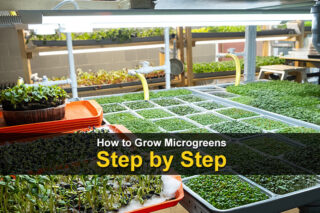
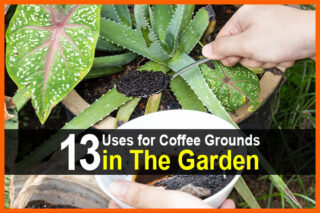
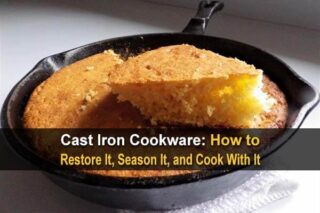
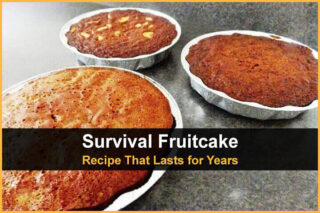

I live in the “great northeast” When would I plant the trees? Should they grow a full year indoors first? Will saplings make it through the winter. Winters here are serious. zone 5
I’m in zone 3. I only see crab apple trees here thrive so I’m really thinking I’ll be keeping my apple trees indoors for a good two years to make sure they could handle it, and even then, maybe bring them into a greenhouse area instead of chancing them outside for the winter.